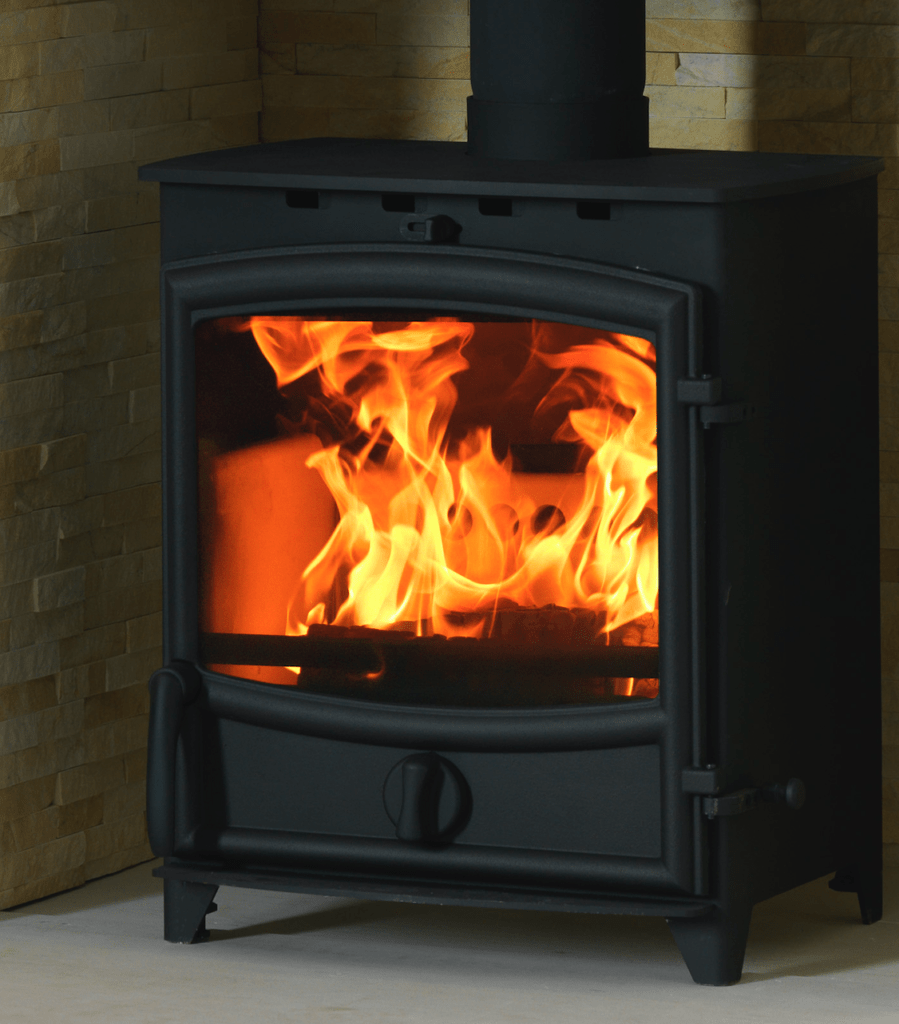The use of wood-burning stoves is growing in popularity in the UK, especially so with the advent of highly efficient Ecodesign stoves and, more recently, with the growing instability of gas and electricity prices, people have found the idea of self-sufficiency very appealing.

Wood-burning stoves are popular all over the world. Dating back to the 16th century, the word stove is believed to have come from the word ‘stofa’ – meaning an enclosed space. The earliest stoves were supposedly a blend of masonry and iron plates, designed to distribute heat and also to act as a hot plate to cook from – not too dissimilar to our Go Eco Adventurer stove, with the optional oven!
Stoves are found worldwide – mainly in cooler countries for obvious reasons. Here is an overview of some of the most ‘ wood-centric’ countries not too far from home:
Switzerland – More than 70% of Swiss homes use heating oil, wood or gas. The number of Swiss homes that mainly burn wood stands at around 12%. Biomass in the form of pellets, logs, wood chips and waste wood accounts for around 85% of all biomass in Switzerland. Burning wood is currently second to hydroelectric power as the leading renewable energy source in the country. Due to Switzerland’s vast woodlands, the Swiss Federal Office of Energy (SFOE) say harvesting wood in the right areas is fully sustainable.
Norway – It became a statutory requirement back in 1998 in Norway for all stoves and fireplaces to be clean burn in order to reduce emissions. There are around 2.3 million homes in Norway. Over 50% of these have wood fires in their homes. Wood is considered the most important heating source after electricity. With such a high wood usage, it’s important that households only use high-efficiency wood-burning stoves, which produce up to 90% fewer emissions than a traditional open fire.
Finland – Energy derived from wood fuels accounts for around 25% of Finland’s energy consumption. Nearly 38% of total energy consumption in Finland comes from renewables – so the vast majority of this is wood. Like other Scandinavian countries, as wood burning is so popular, there is a real drive to make sure homes are burning wood correctly (i.e. correctly seasoned) and use high-efficiency, low-emission stoves.
Birch is considered one of the most popular woods to burn in Scandinavian countries. It’s popular because of the following reasons:
1. It’s easy to light
2. Silver birch grows in abundance in this part of the world alongside pine and spruce.
3. It produces large bright flames. This not only looks good, but it also produces lots of heat – quickly.
4. It’s relatively cheap – which is to be expected if there is such a large abundance of it

Sweden – As with many other Scandinavian countries, those that live in Sweden have a very good understanding of burning wood, what to burn, how to burn it and what not to burn. Due to this fact, pollution from burning wet wood or burning the wrong type of fuel on a stove is much lower than compared to countries that don’t have wood-burning woven into their way of life. Furthermore, in Sweden, in particular, training is mandatory and regulated for chimney sweeps. There is also a two-step sign-off after a stove or fireplace has been fitted.
Denmark – On the 5th May 2022, the use of wood-burning stoves and fireplaces in Denmark produced before June 2008 in areas with district heating or natural gas became illegal. There are around 700,000 wood-burning stoves and fireplaces in Denmark. Around 55% of these are thought to have been produced before 2008, with an estimated half of these located in areas with district heating or natural gas. Denmark has some of the strictest rules around the use of wood-burning stoves. Furthermore, 83% of air pollution in Denmark comes from other countries. Denmark is joined to Germany to the south and is across the sea from Sweden – which is accessible via the Øresund Bridge.
Poland – Due to the spiralling price increases in gas and electricity, there is a shift towards burning wood in Poland. This is the same for several other nearby countries. However, Poland is far less affluent than many of the aforementioned Scandinavian countries, and so a key driver for using wood to stay warm is financial. Poland has vast woodlands, so an abundant supply of wood is readily available. According to State Forests, which manages woodlands in Poland, by June 2022, forest districts had sold over 370,000 cubic metres of firewood. This represents a 30% increase from last year. While some are snapping up seasoned firewood, there are many who are reportedly burning all sorts of things in their stove to keep warm as poverty and cost of living bites.
Germany – Mainly driven by the war in Ukraine, many Germans are stock-piling wood to use on stoves to keep warm this winter, avoiding reliance on gas and electricity. Over 27% of households in Germany have a stove as a supplementary heating appliance. The sale of wood with a moisture content above 25% is illegal in Germany.
The Netherlands – Like with other countries, there is a rush to buy firewood in preparation for the winter. The rush for wood in The Netherlands usually starts in September, but due to the war in Ukraine, people started this rush in July, according to one wood supplier. The Netherlands aims to ban fossil fuels for new heating insulations from 2026. This could mean an increase in Ecodesign stove sales – renowned for their green credentials. We already supply a number of our stoves to The Netherlands.
To Conclude – Regardless of the country, it is easy to see why there is an increase in stove sales, mainly driven by the desire to be, to some degree, self-sufficient and enjoy a renewable and sustainable heating source. However, it is unfortunate that with the spiralling costs of electricity and gas threatening Europe, some will turn to stoves to burn all sorts of unsuitable items to keep warm. While these will be in the small minority, they need to be aware of the dangers of burning such. Burning correctly seasoned firewood need not be expensive; it can be free if you can legally source it yourself.








